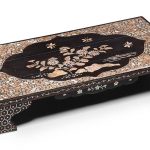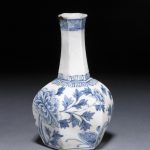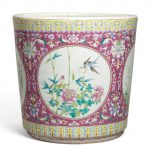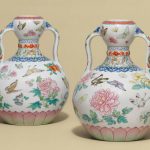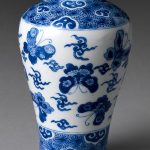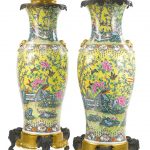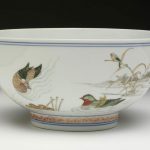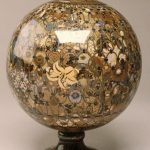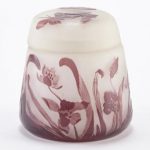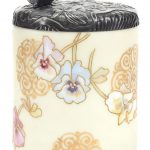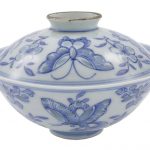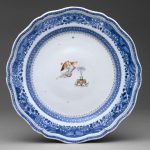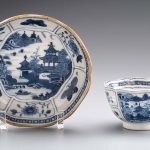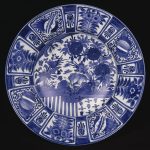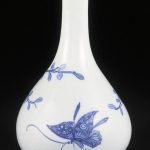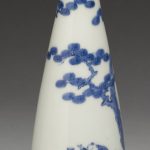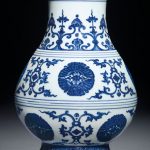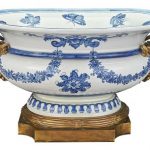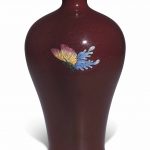The post Gilding appeared first on Antique Butterflies.
]]>Below are some examples and price guides of antique items which have gilding and butterflies in their design including a Worcester inkstand and a Meissen cup and saucer.
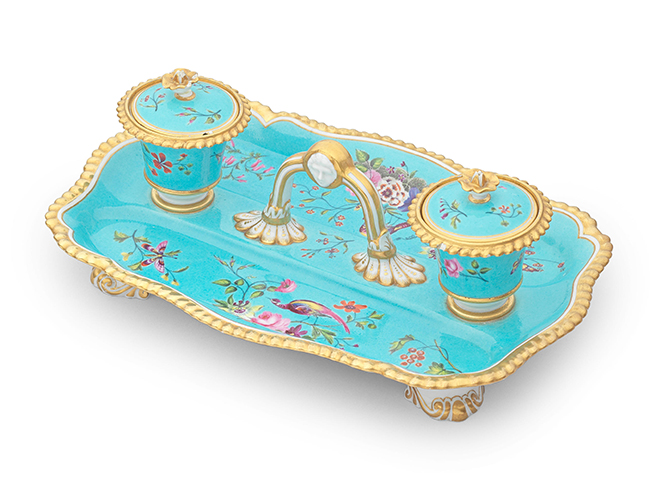
A Flight, Barr and Barr Worcester inkstand and two covers, circa 1825-30
The gadroon-edged tray raised on four scroll-moulded feet and inset with two pen trays flanking a pair of fixed, urn-shaped inkwells and covers either side of a handle embossed with a female mask, painted on a vibrant turquoise ground with ‘Fancy Birds’ on stems of colourful flowers, butterflies and scattered flowers and berries, the rims brightly gilded, 27.3cm wide, script mark referring to Coventry St address
Sold for £701.25 inc. premium at Bonham’s in 2021
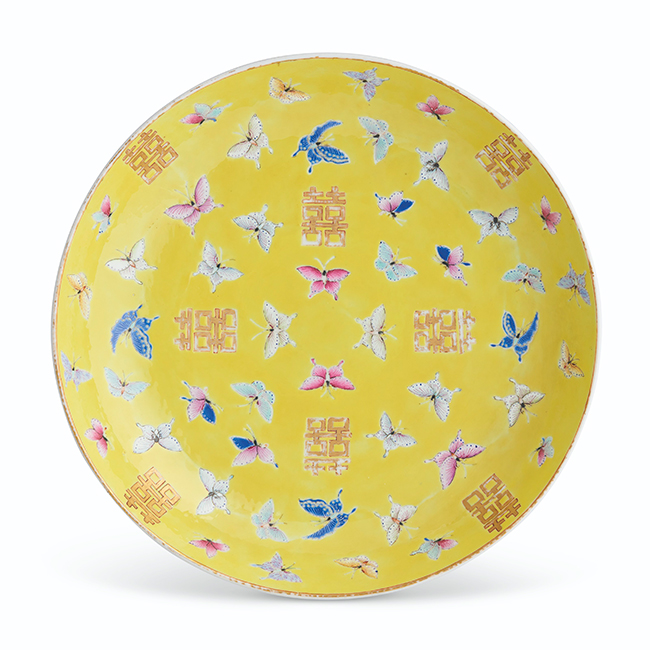
A LARGE YELLOW-GROUND FAMILLE ROSE AND GILT-DECORATED ‘BUTTERFLY’ DISH
CHINA, QING DYNASTY, GUANGXU SIX-CHARACTER MARK IN IRON-RED AND OF THE PERIOD (1875-1908)
Sold for EUR 9,375 at Christie’s in 2021

Meissen Porcelain Two-Handled Chinoiserie Beaker and a Saucer
Circa 1730, blue crossed swords marks and gilder’s 3. or 5., both painted in the manner of J.G. Höroldt
The tapering conical beaker flanked by gilt wishbone handles, finely painted with either a Chinese figure seated at a table before a palm tree or with figures pursuing butterflies, the saucer with two figure preparing and serving tea, each within an ombrierte quatrefoil shaped panel edged by a Böttger-lustre and a gilt cartouche, trimmed with iron-red scrollwork, the border with Laub-und-Bandelwerk and gilt line rims, the underside with iron-red flower sprays.
Height 3 1/8 inches, width overall 5 1/2 inches.
Sold for $3,150 (includes buyer’s premium) at Doyle in 2021
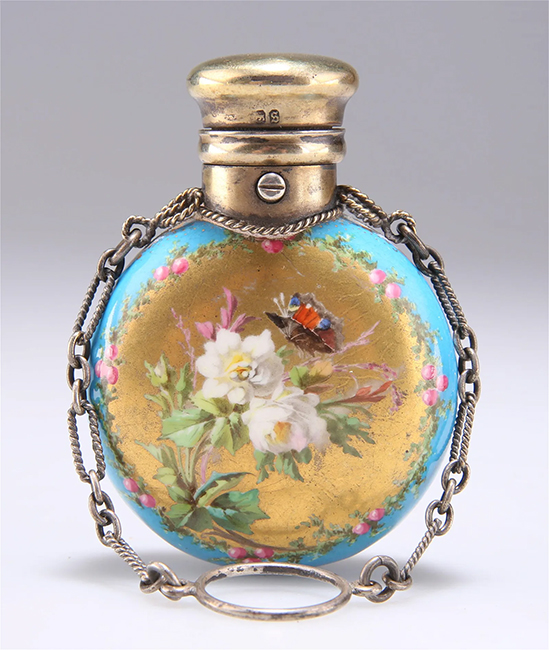
A VICTORIAN SILVER-GILT AND PORCELAIN SCENT FLASK
by Samuel Mordan & Co, London 1892, the globular body enamelled and gilded with floral sprays and butterflies, the hinged gilt cover opening with a push button and fitted with a suspension ring. 7.5cm by 6cm
Sold for £480 at Elstob Auctioneers in 2023

In the Qing Dynasty, silver gilded hairpin with jade flower and butterfly pattern
Sold for US$1,000 at SVETHRS Auction LLC in 2023
The post Gilding appeared first on Antique Butterflies.
]]>The post Ceramic appeared first on Antique Butterflies.
]]>Below are some examples and price guides of ceramic antiques including a Majolica butterfly and orchid dressing table tray and a Doulton Lambeth stoneware oil lamp.
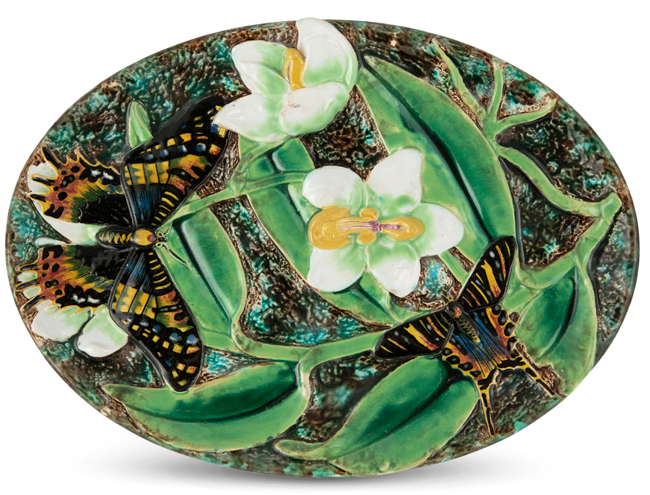
George Jones Majolica Butterfly and Orchid Dressing Table Oval Tray
Circa 1874
Impressed GJ monogram mark, B6 and 6 raised registry diamond (18-U-A-8) for 18 December 1874, black painted x
Naturalistically molded with two outstretched swallowtail butterflies and flowering white orchids. Length 11 inches.
Part of an eight-piece dressing table set.
Sold for $4,095 (includes buyer’s premium) at Doyle in 2021

20th Century Chinese ceramic vase in with a textured / sgraffito periwinkle blue with butterfly and floral details, marked Made in China on bottom, measures 8 1/8 inches high.
Sold for US$475 at Blackwell Auctions in 2022

Purple Clay Handled Pot with Golden Flowers and Butterflies Design.
Dimensions
9 x 15 cm
Sold for US$1,600 at Top Notch Collections in 2022

Doulton Lambeth Mark V Marshall Stoneware Oil Lamp
Antique 19th century ceramic relief body decorated with owls and butterflies mounted on metal stand.
Doulton Lambeth marks, artist’s monograms.
Sold for US$600 at Lion and Unicorn in 2022
The post Ceramic appeared first on Antique Butterflies.
]]>The post Kakiemon appeared first on Antique Butterflies.
]]>The style was quickly copied by the new European porcelain factories that appeared in the 18th century, such as Meissen in Germany, Chantilly in France and Chelsea in England. The Chinese also began to copy the style for Chinese export porcelain. By about 1760 it had largely fallen from fashion in Europe. Reference: Wikipedia
Below are some examples and price guides of Kakiemon antiques which have butterflies as part of their design including an octagonal bowl.
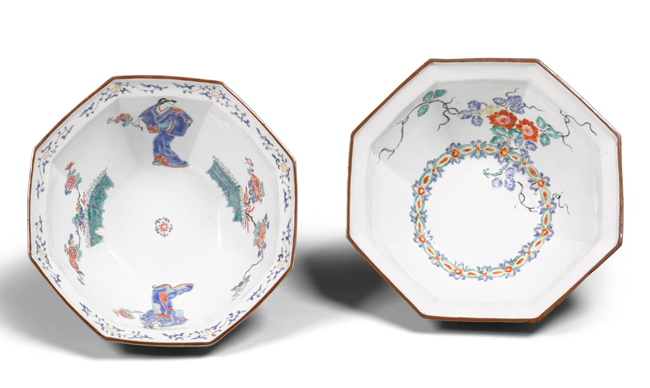
Two octagonal porcelain bowls
Hizen ware, Kakiemon type
Edo period (1615-1868), 18th century
Each painted in red, yellow, blue, green, and black enamels with a chocolate-brown rim, the first decorated on the interior with two Kanbun beauties holding sprays of flowers and blossoming peonies and chrysanthemums behind a brush fence, the exterior a squirrel on grape vines on a bamboo trellis and butterflies above flowers and rocks, the second decorated on the interior with flowering vines rising from a band of linked blossoms encircling the cavetto, the exterior with scattered cherry blossoms
8 1/2in (21.6cm); 8 3/8in (21.2cm) diameter
Sold for Sold for US$2,167.50 inc. premium at Bonham’s in 2021

Japanese Arita Kakiemon octagonal porcelain serving bowl. Deep bowl with flaring mouth-rim, Inside decorated with butterflies, Ho Ho bird, cloud and moon, flowers and leaves. The center is decorated with flowers surrounded by a doubled octagon. The mouth-rim has a cage-au lait enameling and next to that a band of flowers. The outside, flowers and bamboo trellis. Made by the Kakiemon Kilns. ca. 1725, 4 1/4″H x 8 3/4″diam
Sold for US$375 at Ripley Auctions in 2021
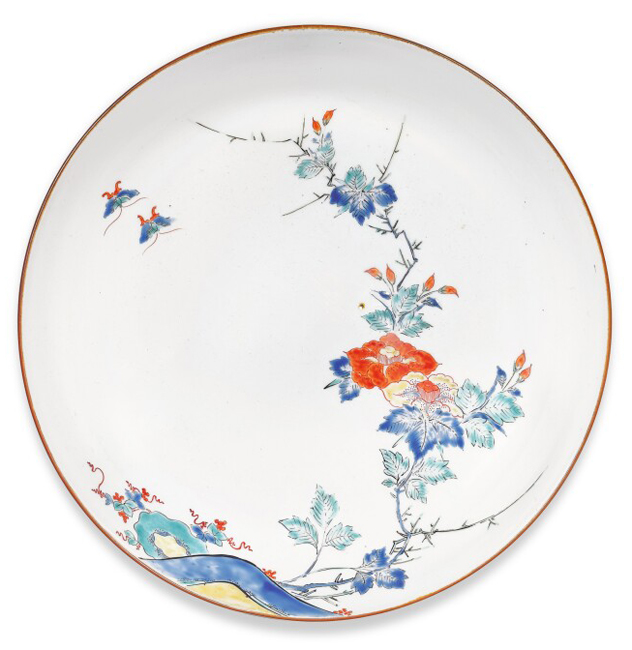
A KAKIEMON DISH
EDO PERIOD, LATE 17TH CENTURY
the shallow, circular dish decorated in iron-red, green, yellow, blue and black enamels with butterflies hovering beside tree peonies emerging from behind rockwork, chocolate rim
22 cm, 8 3/4 in. diam.
Sold for 15,120 GBP at Sotheby’s in 2020
The post Kakiemon appeared first on Antique Butterflies.
]]>The post Celadon Glaze appeared first on Antique Butterflies.
]]>Eventually, European potteries produced some pieces, but it was never a major element there. Finer pieces are in porcelain, but both the color and the glaze can be produced in stoneware and earthenware. Most of the earlier Longquan celadon is on the border of stoneware and porcelain, meeting the Chinese but not the European definitions of porcelain. Reference: Wikipedia

A FAMILLE ROSE CELADON-GROUND MOONFLASK 19th century
Decorated to each face with butterflies amongst flowering peony stems, the sides with bats amongst clouds. 39cm (15 3/8in) high.
Sold for £ 1,147 (US$ 1,416) inc. premium at Bonham’s in 2021
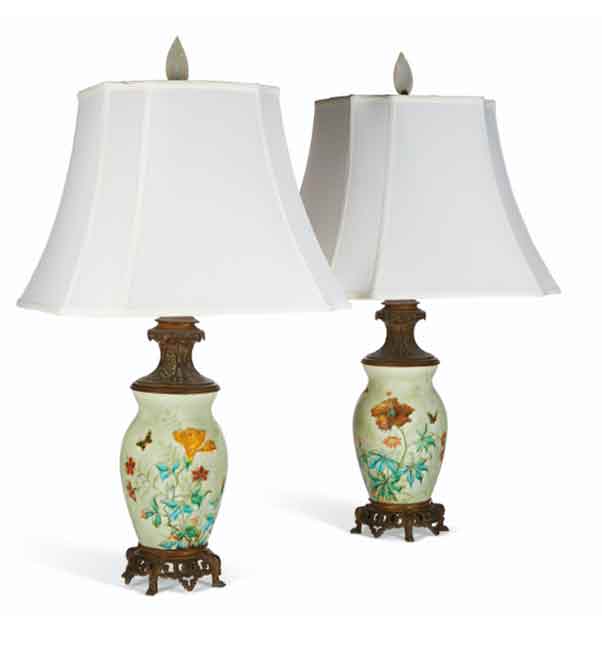
A PAIR OF GILT-METAL MOUNTED THEODORE DECK FAIENCE CELADON-GROUND LAMPS CIRCA 1880, IMPRESSED TH. DECK MARKS AND CYPHER.
Painted and enriched in gilt foil with birds, butterflies and flowers on a background lightly molded with flower-heads and scrolls
10 in. (25.4 cm.) high, the ceramic
Sold for USD 5,000 in 2021
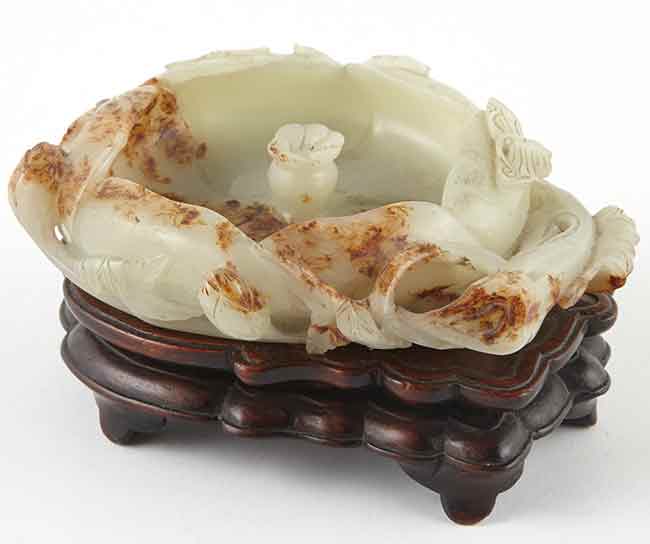
Chinese Celadon Jade Brush Washer
19th Century
Carved as a large lotus leaf with butterflies and budding flowers. Diameter 5 inches.
Sold for $5,625 (includes buyer’s premium) at Doyle in 2020

A Famille Rose Celadon Vase Late Qing. With a globular body and tubular, slightly waisted neck, exterior has protruding pattern with famille rose painting of flowers butterflies and clouds against a celadon ground, H:33cm
Sold for CA$2,000 at Stunning Arts Auction & Appraisal in 2022

A rare celadon-glazed ‘butterfly’ box and cover Tang dynasty / Five dynasties of compressed circular form, the narrow straight sides tapering towards a flat base, the domed cover molded to the top with a butterfly in flight, the auspicious insect highlighted with dark brown spots at the head and wings, covered with a translucent glaze of a pale celadon color suffused with a fine network of crackles.
Sold for 12,600 USD at Sotheby’s in 2021
The post Celadon Glaze appeared first on Antique Butterflies.
]]>The post Joseon / Choson Dynasty appeared first on Antique Butterflies.
]]>The Mid-Joseon dynasty painting styles moved towards increased realism. A national painting style of landscapes called “true view” began – moving from the traditional Chinese style of idealized general landscapes to particular locations exactly rendered. While not photographic, the style was academic enough to become established and supported as a standardized style in Korean painting. At this time China ceased to have pre-eminent influence, Korean art took its own course, and became increasingly distinctive to the traditional Chinese painting.
Ceramics are a form of popular art during the Joseon Dynasty. Examples of ceramics include white porcelain or white porcelain decorated with cobalt, copper red underglaze, blue underglaze and iron underglaze. Ceramics from the Joseon period differ from other periods because artists felt that each piece of art deserved its own uniquely cultivated personality. Reference: Wikipedia
The post Joseon / Choson Dynasty appeared first on Antique Butterflies.
]]>The post Chinese Porcelain appeared first on Antique Butterflies.
]]>Eventually, porcelain and the expertise required to create it began to spread into other areas of East Asia. During the Song dynasty (960–1279 AD), artistry and production had reached new heights. The manufacture of porcelain became highly organised, and the dragon kilns excavated from this period could fire as many as 25,000 pieces at a time, and over 100,000 by the end of the period. While Xing ware is regarded as among the greatest of the Tang dynasty porcelain, Ding ware became the premier porcelain of the Song dynasty.
By the time of the Ming dynasty (1368–1644 AD), porcelain wares were being exported to Europe. Some of the most well-known Chinese porcelain art styles arrived in Europe during this era, such as the coveted “blue-and-white” wares. The Ming dynasty controlled much of the porcelain trade, which was expanded to Asia, Africa and Europe via the Silk Road. In 1517, Portuguese merchants began direct trade by sea with the Ming dynasty, and in 1598, Dutch merchants followed.
Some porcelains were more highly valued than others in imperial China. The most valued types can be identified by their association with the court, either as tribute offerings, or as products of kilns under imperial supervision. Since the Yuan dynasty, the largest and best centre of production has made Jingdezhen porcelain. During the Ming dynasty, Jingdezhen porcelain become a source of imperial pride. The Yongle emperor erected a white porcelain brick-faced pagoda at Nanjing, and an exceptionally smoothly glazed type of white porcelain is peculiar to his reign. Jingdezhen porcelain’s fame came to a peak during the Qing dynasty. Reference: Wikipedia
The post Chinese Porcelain appeared first on Antique Butterflies.
]]>The post Jar appeared first on Antique Butterflies.
]]>Jars can be used to hold solids too large to be removed from, or liquids too viscous to be poured through, a bottle’s neck; these may be foods, cosmetics, medications, or chemicals. Glass jars—among which the most popular is the mason jar—can be used for storing and preserving items as diverse as jam, pickled gherkin, other pickles, marmalade, sun-dried tomatoes, olives, jalapeño peppers, chutneys, pickled eggs, honey, and many others. Reference: Wikipedia
Below are some examples, information and price guide to jars with butterflies in their design including a Galle cameo glass jar and a famille rose butterfly jar.
The post Jar appeared first on Antique Butterflies.
]]>The post Underglaze appeared first on Antique Butterflies.
]]>Below are some examples, information and price guides to antique ceramics with underglaze decoration depicting butterflies including a pair of underglaze blue vases.
The post Underglaze appeared first on Antique Butterflies.
]]>The post Blue and White Ceramics appeared first on Antique Butterflies.
]]>The origin of this decorative style is thought to lie in Iraq, when craftsmen in Basra sought to imitate imported white Chinese stoneware with their own tin-glazed, white pottery and added decorative motifs in blue glazes. Such Abbasid-era “blue and white” pieces have been found in present-day Iraq dating to the 9th century A.D., decades after the opening of a direct sea route from Iraq to China. Reference: Wikipedia
Below are some examples, information and price guides to blue and white ceramics which depict butterflies, including a wine flask and a blue and white butterfly vase.
The post Blue and White Ceramics appeared first on Antique Butterflies.
]]>The post Flambé appeared first on Antique Butterflies.
]]>The potters at the official workshops were challenged to experiment with new techniques and styles. They came up with shapes, clearly influenced by archaic bronze vessels and a new ware on a porcelain body using three distinctly different glazes, one for the blue inside, one for the red outside and a third for the brownish green applied within the foot-rims. The Iridescent blue, purple, or brown splashes and streaks characteristic of this glaze are described as yao bian, or “transmutation glaze” and resulting from transmutation of colloidal copper, iron, or other metallic materials into suffusions breaking up the glaze surface. Reference: Gotheborg
Below are some examples, information and price guides to Flambé antiques with butterflies in their design including an ovoid vase painted by Kashosai Ujichika and a Wedgwood Fairyland Lustre trumpet vase.
The post Flambé appeared first on Antique Butterflies.
]]>